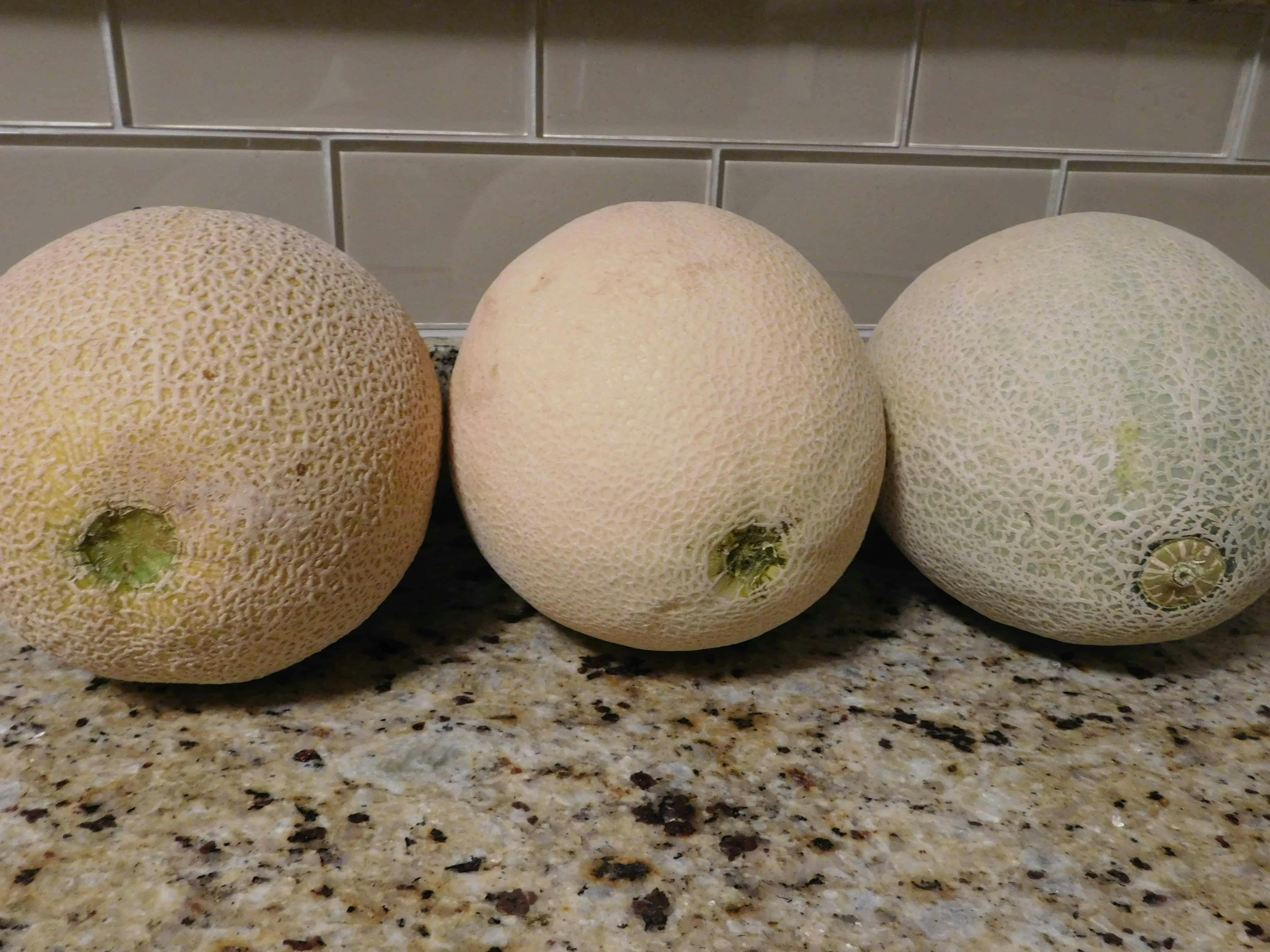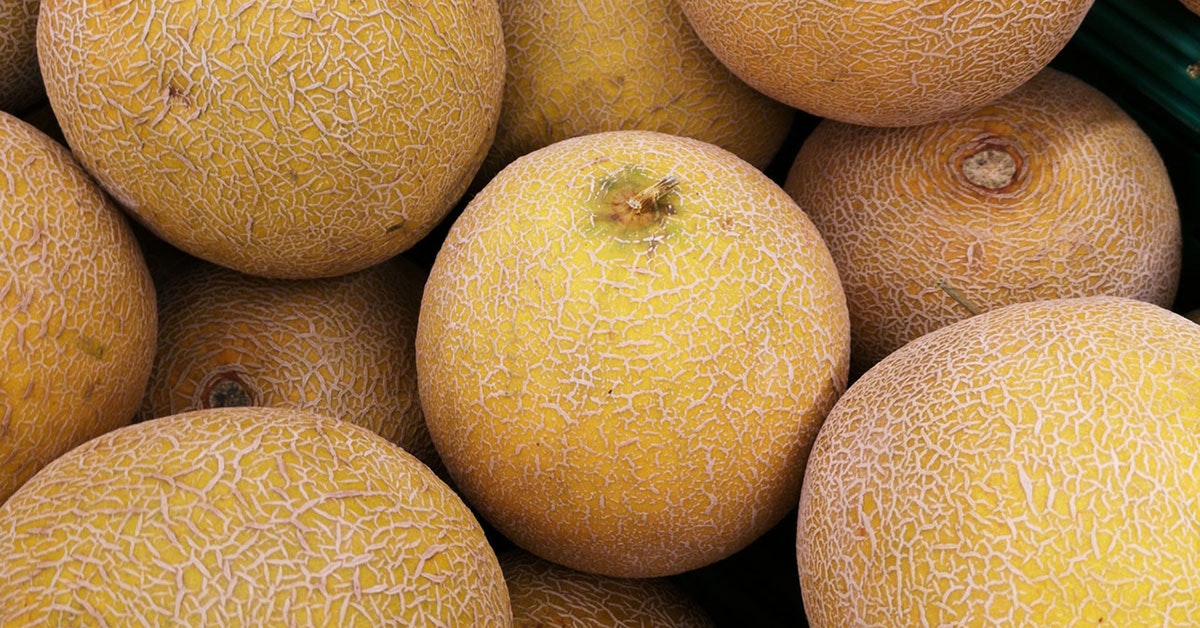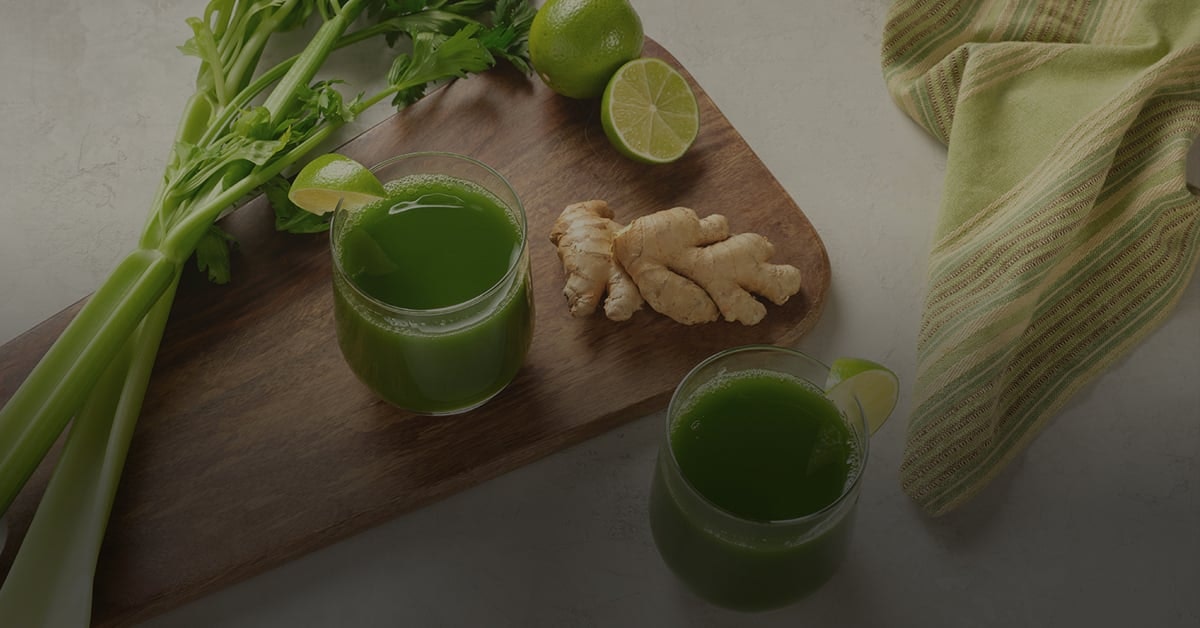There’s truly nothing worse than the feeling when you blissfully cut into your fresh, new cantaloupe from the grocery store only to find that it is overripe and fermented.
Gross, right? Sadly, we’ve been there before (more than once if you count other fruits). So, how do you find a perfectly ripe cantaloupe?
Today, we’re going to answer that question with 4 tips on how to choose the best ripe melon out of the bunch:
- Check the Outside of the Cantaloupe
- Take a Peek at the Stem End of the Cantaloupe
- Tap the Cantaloupe
- Do the Smell Test
Before we dive in, we have to go over the amazing health benefits of cantaloupe melons, right?
Cantaloupe Health Benefits
Not only are fresh cantaloupes deliciously sweet and low in calories, but they also aid in hydration, digestion, decreasing inflammation, and more! Adding more rockmelons (the Australian word for cantaloupe) into your diet will help you shower your body in vitamins and minerals.
But how do you find the best cantaloupe in the produce section? Keep reading for our great tips!
4 Tips for Choosing the Best Cantaloupe
1. Check the Outside of the Cantaloupe
The color of your ideal ripe cantaloupe should be a beige or sandy-gold. Try your best to stay away from those that are still green. This means they are unripe and not ready to consume.
As with many fruits, you will want to stay away from fruits that have large holes, bruising, mold, soft spots, or any juice leaking out. This may indicate that the melon is too ripe! Make sure to touch the outside rind of the cantaloupe to feel for raised edges on the webbing. This indicates that your melon is ripe and ready to be eaten.
2. Take a Peek at the Stem End of the Cantaloupe
The cantaloupe stem has the ability to give you a better insight into the quality of the fruit you’re selecting. Ideally, you should search for a cantaloupe that has an inverted stem (similar to a belly button). If you find a melon that has a stem still attached or rough edges where the stem was attached, this means that it was picked too early from the field, which can result in poor flavor.

3. Tap the Outside of the Cantaloupe
Similar to watermelon, you will want to tap the outside of your cantaloupe and listen for a low, solid sound. If you hear a hollow sound, this may be a bad sign.
4. Do the Cantaloupe Smell Test
Next, and arguably the best part of the cantaloupe process: the smell test. Pick up and smell the blossom end (the opposite end from the stem end) of the cantaloupe. You should experience a sweet smell. If you smell anything musty or acidic, this indicates that your melon is overripe and will not be good for consumption.
Proper Cantaloupe Storage
We recommend storing your cantaloupe in the refrigerator – this will keep your melon crisp and reduce the chance of any bacteria growth. It will also slow down the ripening process ensuring that you can enjoy your fruit in it’s peak flavor. If you have an unripe melon, store it at room temperature to jumpstart the ripening process.
These great tips can also be applied to other fruits in the melon family such as honeydew, muskmelon, watermelon, and more.
We hope these tips will help you find the perfect cantaloupe out of the bunch!
If you want to turn your ripe cantaloupe into a delicious juice, try our Strawberry & Cantaloupe Juice Recipe or our Cantaloupe Melon Juice with Pear & Lavender Recipe.
Want to browse loads of chef-made juicing recipes? Check out our juicing recipes here!
How to Juice a Cantaloupe
The absolute best way to juice a cantaloupe is to use a real two-stage cold press like the Goodnature M-1. What makes a Goodnature different than other methods like a masticating? A Goodnature juice press removes all of the insoluble fiber so your body can absorb the nutrients directly with minimal work required by your digestive system. Learn about the Goodnature Difference.
Here are the steps to getting the highest yielding, most nutritious juice possible:
- Peal the cantaloupe
Use a knife or a potato peeler to remove the peel. It doesn't have to be perfect, leaving a little but of peel on is fine. - Cut the cantaloupe into chunks
If using a Goodnature, just cut the pieces small enough to fit into the chute - Grind and press
That's it! You will have the most vibrant, most delicious cantaloupe juice you've ever tasted.



Comment